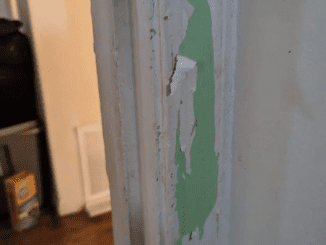Keeping your brain active and fresh is essential for mental well-being. While diet and exercise contribute to mental sharpness, challenging yourself with puzzles and brain teasers can also stimulate your mind in exciting ways. If you’re looking to engage your logic skills with some fun, you’ve come to the right place! This puzzle will test your observation and attention to detail.

In the image shown, most people will immediately see a cat perched on a woman’s shoulder. However, the hidden challenge is spotting the man. Let’s dive into why these types of visual brain teasers can be tricky and walk through how to find the hidden figure.
Many people approach visual puzzles with a set pattern in mind. For instance:
- Seeing Only the Obvious: When presented with an image, our brains tend to recognize the familiar and ignore less obvious details. Here, people see the cat and the woman because those figures are straightforward. But the hidden man requires a shift in perspective.
- Not Flipping the Image: Often, these brain teasers require you to look at things from a different angle. In this case, flipping the image reveals the hidden man.
- Focusing on the Wrong Details: People might spend too much time on the cat and miss subtle elements, like how the folds in the woman’s clothing outline a face when rotated. Small details make a big difference in puzzles like this.
Now, let’s walk through how to find the hidden man step-by-step. Follow these tips to train your brain to be more observant and attentive to subtle details.
1. Analyze the Obvious Features:
- Look at the main figures: a cat and a woman with distinct facial features.
- Notice where your eyes are drawn first and why. Most likely, you’re seeing the cat and the woman’s face clearly.
2. Change Your Perspective:
- Rotate the image or try looking at it from different angles. This particular puzzle reveals the hidden man when you flip the image upside down.
- By doing so, you start seeing new patterns emerge, especially in areas that previously looked like folds of fabric or shadows.
3. Focus on Specific Areas with Unusual Details:
- Look at the area circled in the second image above. In the flipped view, it appears to outline a man’s face, where the folds of the fabric and shadows create distinct facial features.
- The highlighted area reveals a profile view of a man’s face, looking upwards or to the side.

4. Decipher the Hidden Image:
- Now that you see the outline of the man, analyze how the artist used the shapes and shadows cleverly. The lines that once appeared as random folds now resemble a nose, chin, and eye socket.
- It may take a few seconds for your brain to recognize it, but once you spot it, you’ll see the face clearly.
5. Reflect on the Experience:
- Notice how much time you spent on the initial view versus after rotating the image. This puzzle demonstrates how mental flexibility and a willingness to change perspective can lead to new insights.
Visual brain teasers like this one emphasize the importance of details and perspective shifts. Our brains often make assumptions based on familiar shapes and patterns. In this image, the brain categorizes the cat and woman’s face quickly, while the hidden man requires a more deliberate search. This puzzle reminds us that sometimes, we need to take a step back, look from a new angle, or focus on less obvious elements to see the full picture.
Did you spot the man? If so, how long did it take you? Share your experience in the comments below. Did you need to flip the image, or were you able to find the man without rotating it? We’d love to hear about the different ways people approach this puzzle.
By approaching brain teasers like this one with curiosity and patience, you can improve your attention to detail and develop a keener sense of observation. Flip, rotate, and explore different views to uncover hidden elements in images. And, as always, keep challenging yourself with new puzzles to keep your mind sharp and engaged. Happy puzzling!


